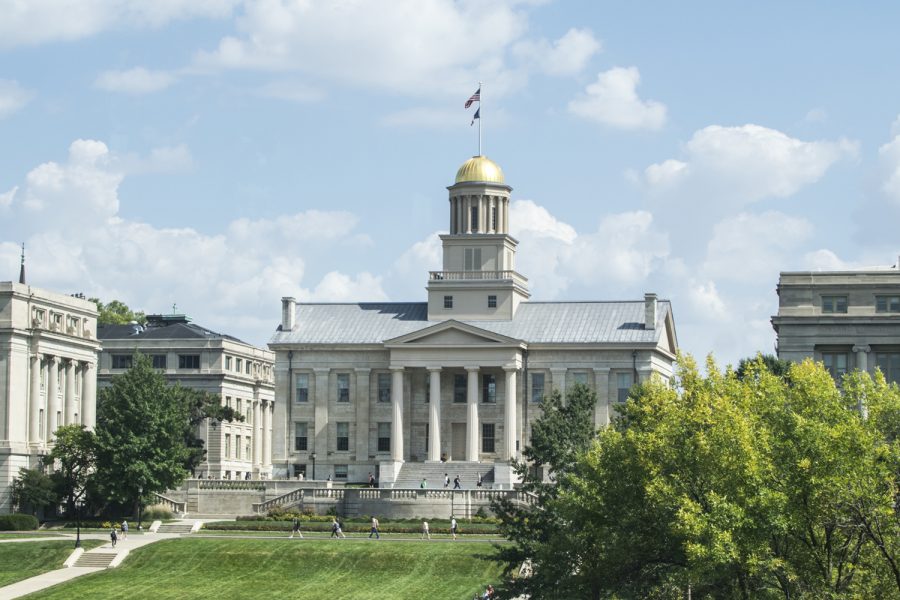UI students make campus green space more habitable for bees with a new garden
The students hope to spread awareness about declining pollinator populations such as bees and monarch butterflies.
April 25, 2019
On a misty Thursday morning, University of Iowa students and a team of UI landscapers and groundskeepers broke ground near the IMU to build a new garden with a special reason: to attract bees and butterflies.
UI students Macy Scully, Chantal DeGroote, and Scotty Heuer are building the garden for UI Professor Jerry Schnoor’s Sustainable Systems course. Scully called it a “pollination station” made up of seven types of plants of varying sizes. The project is sponsored by the Office of Sustainability and Director Stratis Giannakouros.
Scully said part of the project’s purpose is to raise awareness about Iowa’s and the world’s declining bee population. From 2015 to 2016, she said, Iowa saw a 50 percent decrease in its bee population.
“At the rate that we’re losing our bee populations, soon we are not going to have any of them left,” Scully said. “And the implications of what that looks like are pretty scary.”
The garden will attract pollinators such as the monarch butterfly and the mason bee, which doesn’t sting, as honeybees do.
In addition to the garden, the group has a bee box set up to house bee larvae. The bee box, painted with bright colors to attract the bees, was donated by the Bees Waggle, a company based in Colorado.
RELATED: IMU garden aids pollinator insect populations
Scully said she hopes the garden will bring more attention to the issue and inspire people to make bee gardens and bee boxes of their own.
According to Modern Agriculture, bees are essential for pollinating such crops as apples, almonds, cranberries, and broccoli, and they contribute to more than $200 billion worth of annual food production.
Giannakouros said that pollinators, not just bees, are declining at an alarming rate. He said monarch butterflies have collapsed and have gone down 90 percent.
“I feel like people know of it, but they don’t really know that much about it,” Scully said. “They don’t necessarily see how bees are keeping us all here.”
Much of Iowa’s landscape is rural land or urban development, most of which is unusable for bees. Giannakouros said people can adapt land in urban and suburban areas to support local bee populations by putting together “biological islands” or “bio blasts” such as the garden project.
“If a bee was flying over Iowa City, for instance, it would look like a giant desert,” Giannakouros said. “When they fly over these corn fields, even though these fields are green, they’re giant deserts. There’s nothing for them to eat there.”
Giannakouros also said climate change is a large contributor to damaging bee populations. Bees hibernate over the winter and are supposed to emerge when the plants they rely on have flowered. However, he said, with climate change and erratic temperature changes, bees can be awakened by warmer weather before their plants have flowered, and they can die searching for food.
The students have also teamed up with UI Facilities Management to carry out the project. Giannakouros said the Facilities Management crew has worked on other bee-attracting gardens, including a row of plants along a brick wall behind the IMU.
“Even though I am a student, I have the power to change what I believe needs to be changed on campus,” DeGroote said. “If you believe in something and you want to make the change, you are capable of making that change on campus.”




